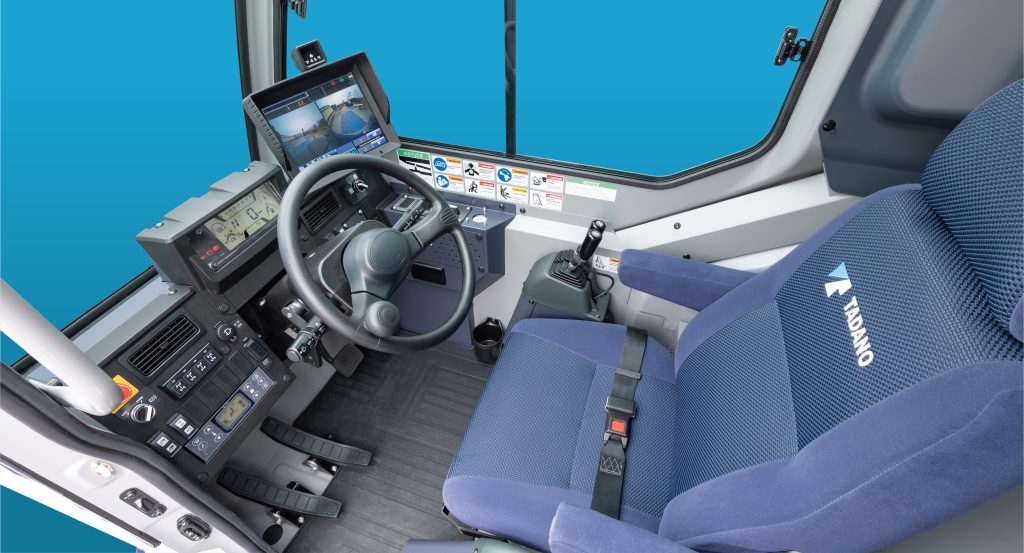
News
Cranes
Lifting Equipment
Sustainability
Tadano sets 2030 emissions reduction target
December 3, 2021 By Bill Tremblay
 Tadano plans to reduce emissions generated by its products by 35 per cent by 2030. Photo: Tadano
Tadano plans to reduce emissions generated by its products by 35 per cent by 2030. Photo: Tadano Tadano has set new sustainability targets aimed at reducing emissions created by its business operations, as well as the cranes it manufactures.
By 2030, the Tadano Group plans to reduce emissions generated by its worldwide business activities by 25 per cent. As well, the manufacturer plans to reduce emissions generated by its products by 35 per cent.
Tadano’s fleet will be gradually converted to engine technologies with zero emissions or significantly reduced emissions. The company has already set the stage for the transition. For example, Tadano’s E-Pack makes zero-emission crane operation possible for local operations.
The electro-hydraulic E-Pack features an integrated 32-kW electric motor that enables the Tadano AC 3.045-1 City and AC 4.080-1 cranes to work without generating emissions, as well as without creating vibrations that can be noticed by the crane operator.
“The E-Pack will soon be usable with additional crane models,” said Dr. Frank Schröder, vice president of the all-terrain crane product line.
The E-Pack is recommended for crane jobs inside buildings, in dense urban areas and at night in residential areas – in other words, anywhere where companies may have to adhere to stricter emission and noise requirements that make conventional crane operation with a diesel engine impossible.
“We’re already assuming that the number of requests for quotations asking for zero-emission operation, or at least significantly reduced emissions, will keep growing in the future,” Schröder said.
Tadano eyes reduced-emission fuels
Several Tadano cranes can operate on alternative diesel fuels. In the European market, this specifically means that all Tadano HK superstructure engines, all CC lattice boom crawler cranes, the GTC-1800EX telescopic boom crawler crane and nearly every all-terrain crane can be operated with paraffinic and synthetically produced diesel fuels without any modifications. This includes reduced-emission fuels such as hydrotreated vegetable oil (HVO), gas to liquid (GtL) and biomass to liquid (BtL).
RELATED: Tadano launches regional websites to unify crane brand
HVO is a promising solution for environmental protection and emission reduction for the company. It is a renewable fuel based on vegetable oils and animal fats, which, may be obtained as waste products from food production.
“Even if HVO is not available everywhere, we consider it an effective option for reducing particulate matter and greenhouse gas emissions in existing vehicles and allowing for operations with significantly reduced emissions throughout the entire lifecycle of our products and beyond,” said Jens Ennen, president and CEO of Tadano Demag GmbH and Tadano Faun GmbH.
“That’s why Tadano will be gradually switching its plants over to renewable fuels so as to keep the emissions from our cranes as low as possible, starting from the actual production process.”
Print this page